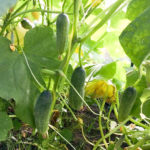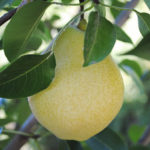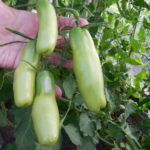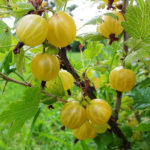Norway spruce Akrokona
The last two or three decades, spruce have turned out to be a real benefit of conifers in landscape design. If earlier they were used to a limited extent, only as an addition to flowering, deciduous trees, now they are often leaders in green compositions. They are appreciated for their expressiveness, durability, unpretentiousness, and the ability to stay green throughout the year.
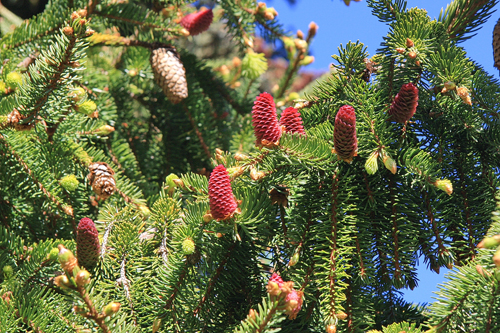
Many species and varieties have become popular, which were known to specialists for a long time, but until recently were used to a limited extent. Such plants can be safely attributed to the Acrocona spruce (Picea abies Acrocona).
History of occurrence, description of appearance
It is known that the first tree of this variety caught the eye of specialists in the vicinity of the city of Uppsala, Sweden. Apparently, this happened in the last quarter of the 19th century, because in 1890 the first specimens of the unusual spruce were already on sale.
It often happens that the name of a variety or hybrid is associated with the appearance of the plant or with some bright feature of it. Our heroine confirms this common principle. The fact is that "acro" means "at the end". The most striking feature of this variety is the presence of unusual, bright cones that form at the ends of each of the branches.
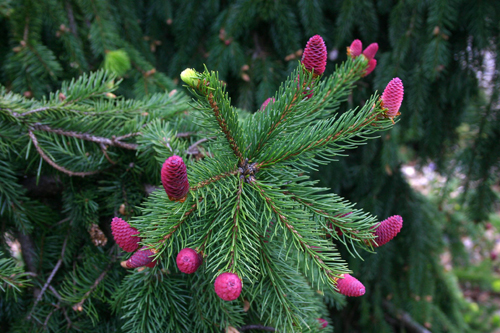
In general, the spruce looks like a low, 3-4 meters, tree, with a sprawling, wide-conical crown, the branches of which show a tendency to lean towards the ground. Thus, the plant takes on a slightly "weeping" shape. It often turns out that it is more correct to call this spruce a bush, and not a tree - so invisible is its central shoot-leader. The lower branches tend to lie on the ground, stretching along its surface.
The needles have a rich green color, young growths are much lighter. Over the course of a year, Akrokona grows only 10-12 cm in height and 2-3 cm in width. This slow growth is largely due to the overall small size of the plant. The color of the bark of young shoots is brown; over time, it acquires a reddish tint, becomes rough.
The decoration of this variety is its cones. As already mentioned, they are always found at the tips of the shoots. As soon as the bud has formed, the branch stops growing in the current season. The cones are extremely decorative: large, cylindrical in shape, initially painted in a bright purple color, over time it turns light brown. When there are a lot of young cones on the tree, the appearance of the spruce is not inferior to flowering plants. It is noteworthy that the cones are formed early, already at the age of three years of the tree.
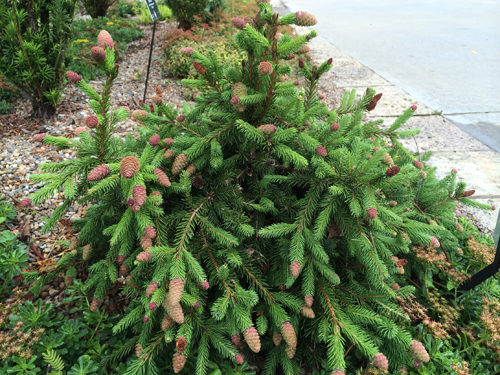
Care advice
Akrokona in its agricultural technology is close to ordinary spruce. It prefers moist, sandy-clayey, acidic soils, but it can adapt to others, including alkaline ones. It does not tolerate only saline soils and stagnant water. Loves the sun, while developing well in partial shade. Frost resistance is high, without shelter it can withstand up to -35 °. It does not like heat and drought, although it is resistant to their short-term effects. With prolonged drought, abundant watering and (preferably) regular spraying of the crown are required.
When the spruce is very young, it can suffer from spring sunburn, so in the first 2-3 years it should be shaded from direct rays, especially in spring, when there is an intensive growth of shoots.
It tolerates pruning well; with skillful care, its crown can be formed in different forms. It is better to cut off shoots at the beginning of summer, at the end of their active growth.
Use in landscape design
This variety is very different from traditional spruces, therefore it is primarily suitable for people who prefer exotic, unusual plants.Akrokona is often used in Japanese-style landscape compositions to decorate a “rock garden”. It makes an excellent hedge, a real impassable wall.
Looks great as a specimen plant, provided that the garden area is small in size. Popular in the so-called heather gardens. Features of use largely depend on what shape you have given the crown of this spruce: an arch, a wide cone, or a "weeping" silhouette.
